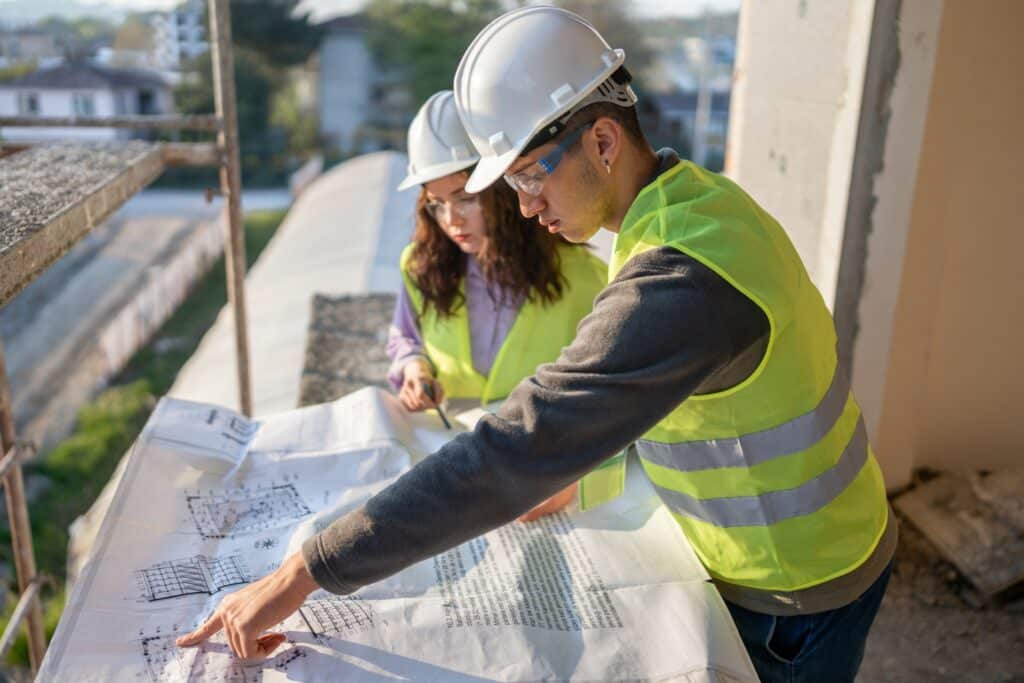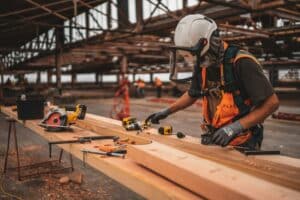Safety on construction sites is crucial, especially when it comes to fire prevention. In Thailand’s bustling building industry, the risk of fire is a serious concern, with various factors contributing to these hazards. Construction sites are filled with flammable materials, electrical equipment, and other potential threats that can lead to a fire outbreak if not carefully managed.
Understanding and addressing these risks is essential for safeguarding both the workers and the structures they build. Implementing effective fire safety strategies can dramatically reduce the potential for incidents, ensuring construction projects proceed smoothly and safely. Crucial steps range from proper storage of materials to educating workers on emergency procedures.
This guide explores essential fire safety tips tailored for the unique challenges of construction projects in Thailand. By incorporating these practices, projects can not only comply with regulations but also create a safer working environment. Join us as we delve into strategies that can protect lives and property on Thai construction sites, fostering safety and peace of mind for everyone involved.
Recognizing Fire Hazards in Construction Sites
Recognizing fire hazards is a critical step in maintaining safety on Thai construction sites. Various elements present unique risks that can lead to potentially catastrophic fires if not properly managed. One of the most common fire risks encountered at construction sites is the presence of flammable materials. These include solvents, fuels, and even certain construction materials like wood and insulation. When these materials are stored incorrectly or are exposed to open flames or hot work like welding, the threat of fire increases significantly.
Another significant hazard is electrical equipment. Power tools, temporary electrical wiring, and lighting are necessary for construction but pose a risk if not properly maintained. Faulty wiring and overloaded circuits can generate sparks, igniting nearby flammable materials. Routine checks on all electrical systems are essential to identify and rectify potential fire risks.
To prevent these dangers, regular safety audits and risk assessments should be performed. Safety audits systematically evaluate all site conditions and work procedures, focusing on identifying potential fire hazards. Risk assessments involve analyzing the likelihood and impact of identified risks, helping to implement targeted control measures. By actively monitoring these elements, site managers can catch potential hazards before they lead to accidents, ensuring a safer working environment for everyone involved.
Implementing Fire Safety Measures
Implementing effective fire safety measures is essential for protecting construction sites in Thailand from the threat of fire. At the forefront of these measures is the installation of fire extinguishers. These must be strategically placed around the site, ensuring they’re easily accessible in an emergency. Equally important is developing an evacuation plan. This plan should outline clear exit routes and procedures for all workers, ensuring everyone knows how to safely evacuate should a fire occur.
Another key component in fire safety is the use of fire-resistant materials. By choosing materials that are less susceptible to burning, the spread of fire can be significantly slowed, providing more time for evacuation and fire fighting. Equally crucial is the proper storage of combustible items. Fuels and other flammable substances should be kept in clearly marked containers, away from ignition sources, and stored in designated areas.
Site managers should conduct regular inspections to ensure all fire safety measures are in place and functioning. Checking for clutter and ensuring clear paths to fire exits are part of these inspections. By adopting these proactive fire safety measures, construction projects can reduce the risk of fire outbreaks, safeguarding both lives and property. Proper implementation fosters a culture of safety and preparedness on every site.
Training and Education for Construction Workers
Training and education are fundamental to ensuring fire safety on construction sites. Every worker must understand the risks and know how to respond effectively in an emergency. Comprehensive fire safety training provides workers with the knowledge and skills needed to act quickly and efficiently, minimizing the impact of a fire incident.
Training should cover several key areas:
– Recognizing Hazards: Workers must identify common fire hazards, such as improperly stored flammable materials and faulty electrical equipment.
– Fire Safety Practices: Proper fire safety practices include maintaining clean workspaces free of clutter, which can fuel fires, and ensuring fire exits are accessible at all times.
– Emergency Procedures: Training should include instructions on how to activate alarms, the use of fire extinguishers, and the steps to safely evacuate.
Regular drills reinforce these teachings, helping workers stay prepared and calm under pressure. A well-informed workforce not only recognizes risks but also contributes to creating a safer construction environment. Therefore, investing in training is crucial for reducing fire risks effectively.
Ensuring Compliance with Thai Fire Safety Regulations
Ensuring compliance with Thai fire safety regulations is vital for minimizing risks and legal penalties. Understanding and following national and local codes keep construction sites aligned with safety standards, safeguarding both the workers and the company’s reputation.
Compliance involves several key steps:
– Fire Safety Codes: Familiarize yourself with national fire safety laws, which dictate the necessary precautions for building safety. Local regulations may provide additional requirements.
– Permits and Inspections: Obtain all necessary permits before beginning construction. Regular inspections should be scheduled to ensure ongoing compliance, identifying any areas needing improvement.
– Documentation: Keep detailed records of all fire safety measures, training sessions, and inspections. Proper documentation assists in building trust and transparency with authorities.
By adhering to these regulations, construction projects reduce the risk of accidents and avoid costly fines. Ensuring compliance demonstrates a commitment to safety and professionalism in the industry.
Conclusion
Securing fire safety on construction sites in Thailand demands a meticulous approach to recognizing hazards, implementing preventive measures, training workers, and ensuring regulatory compliance. These elements together create a robust defense against the risk of fire, safeguarding not just the building, but, most importantly, the lives involved in its creation. For those overseeing construction projects, prioritizing fire safety is both a legal obligation and a vital component of ethical practice.
To reinforce your construction project’s safety protocols, consider partnering with experts who understand the complexities of Thailand construction projects like CJ Samui Builders. Our team is dedicated to providing you with robust fire safety solutions tailored to your project’s needs. Contact us today to learn how we can help make your construction site as safe as possible.




